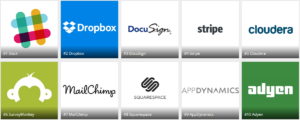Cloud computing, also called “the cloud,” is an Internet-based computing that uses a network of remote servers hosted on the Internet to process shared resources and data to computers and other devices on demand.
The following are the top 10 cloud companies for 2016, according to Forbes. They are expected to impact cloud computing trends in 2017 as they launch innovative technologies and strategies to compete for market share.

- Slack (Searchable Log of All Conversation and Knowledge) – a collaboration tool that offers persistent chat rooms (channels), organized by topic, as well as private groups and direct messaging
- Dropbox – a file hosting service that offers cloud storage, file synchronization, personal cloud and client software
- DocuSign – provides electronic signature technology and Digital Transaction Management services for facilitating electronic exchanges of contracts and signed documents
- Stripe – allows private individuals and businesses to accept payments over the Internet
- Cloudera – offers Apache Hadoop-based software, support and services, as well as training to business customers
- SurveyMonkey – an online survey development cloud-based software as a service (SaaS) company that offers free, customizable surveys, as well as a suite of paid back-end programs
- MailChimp – an e-mail marketing service that sends e-mails on behalf of its users
- Squarespace – a SaaS-based content management system-integrated website builder, blogging platform and hosting service
- AppDynamics – focuses on managing the performance and availability of applications across cloud computing environments and inside the data center
- Adyen – offers businesses an outsourced payment solution that allows merchants to accept payments from anywhere in the world(Source: Wikipedia)
Cloud computing is vital in challenging social media to bring something new to the environment. Social networking sites are said to be the ideal candidates for cloud adaptation. If you do not use social media, your business may run the risk of losing customers, not being informed about positive and negative feedback, and losing market share. If you also decide to forego cloud computing, you may also suffer from bigger capital and operating costs, outdated hardware or software installation or maintenance, and slow access to computing services. It is best to evaluate the pros and cons of both strategies according to your needs. Each organization is as unique as each cloud app or social media site out there. Take advantage of this uniqueness as you begin 2017 with a leap!
By Dez Duran-Lamanilao
